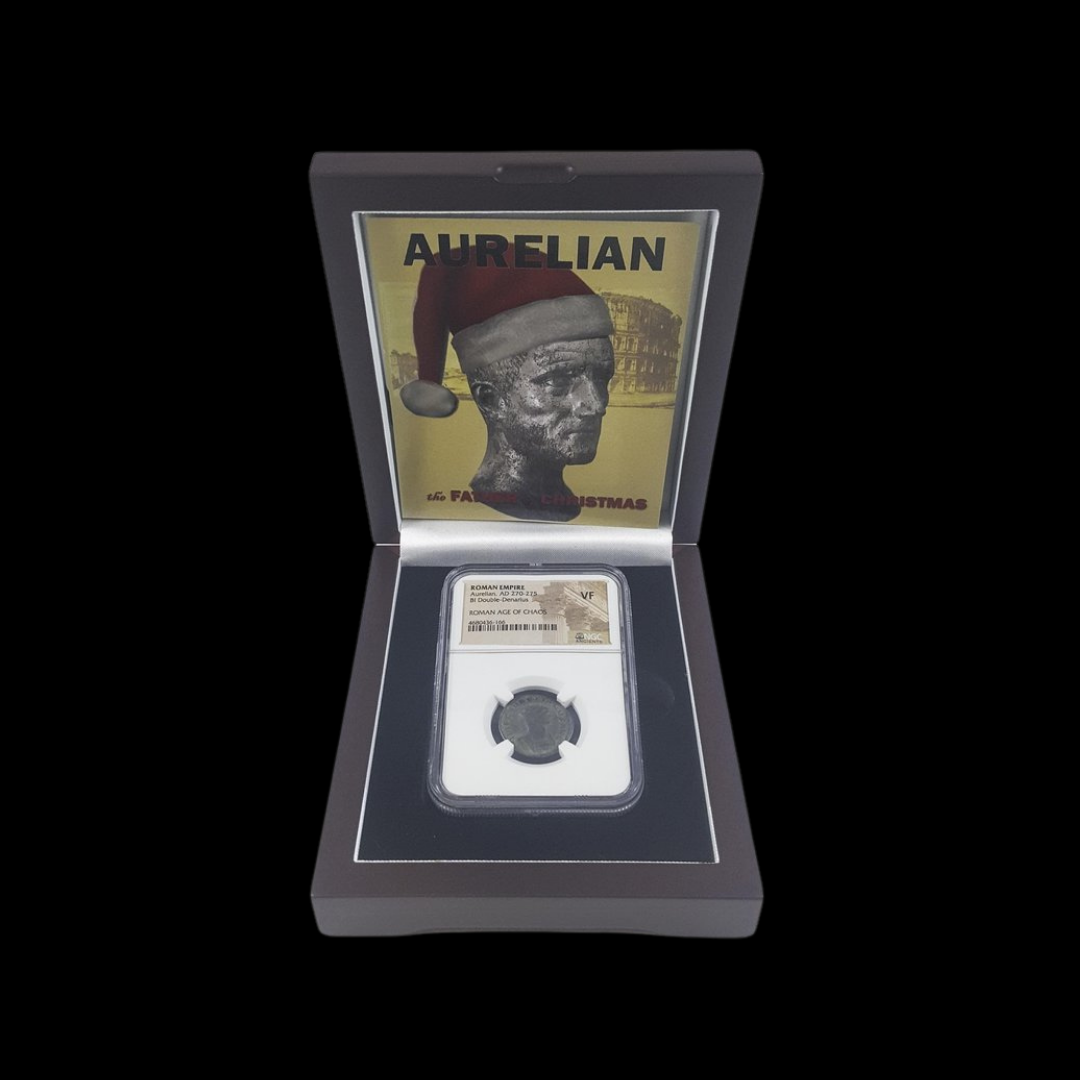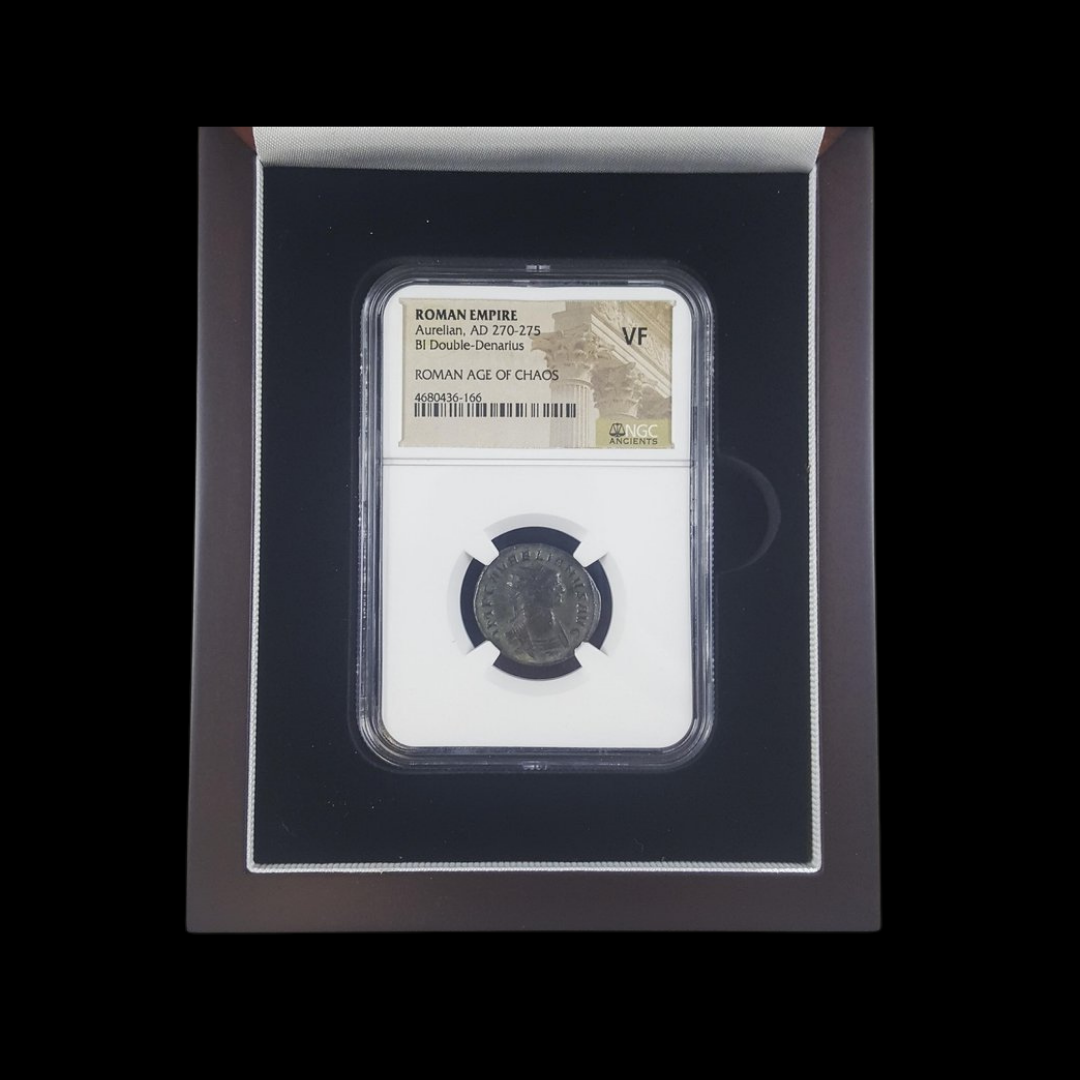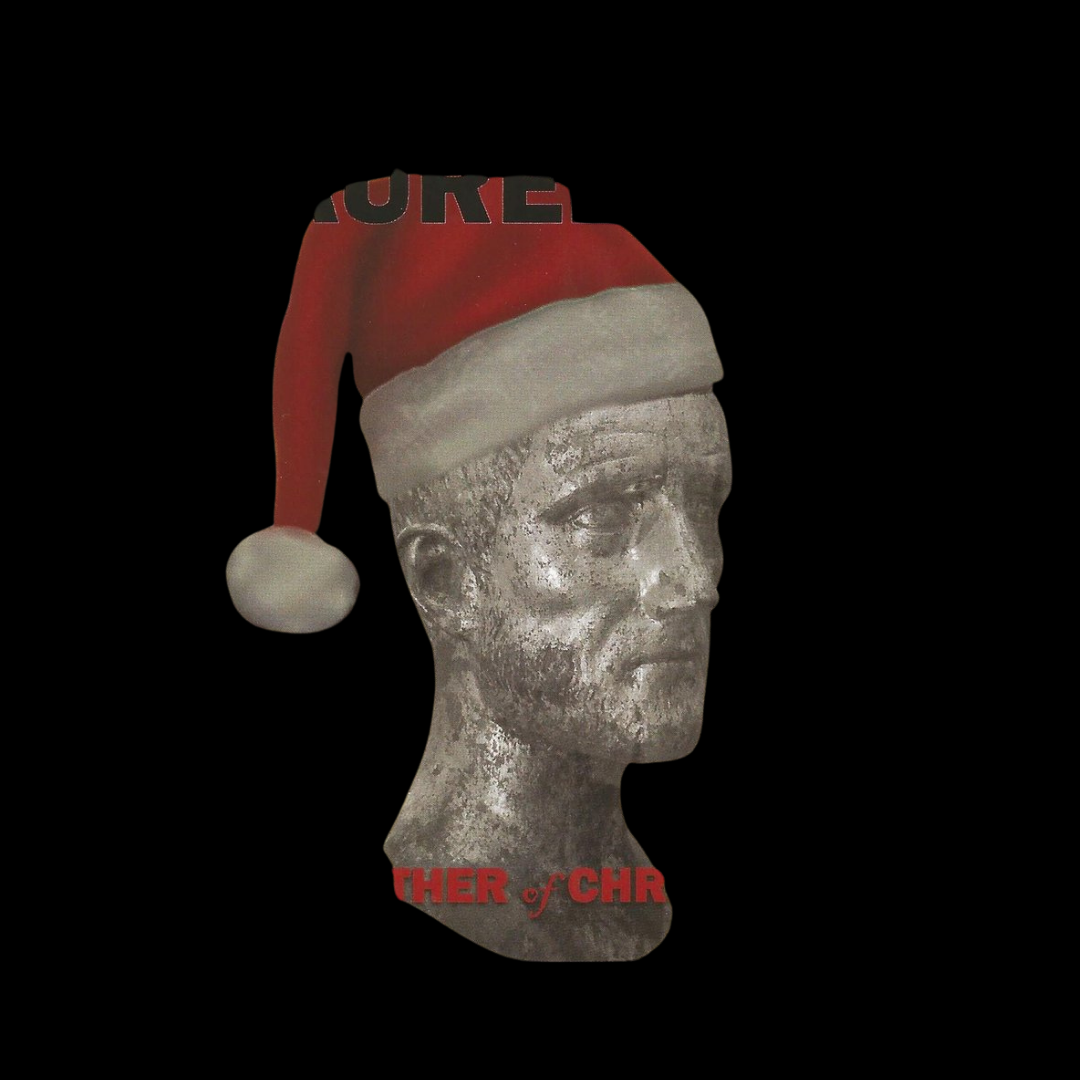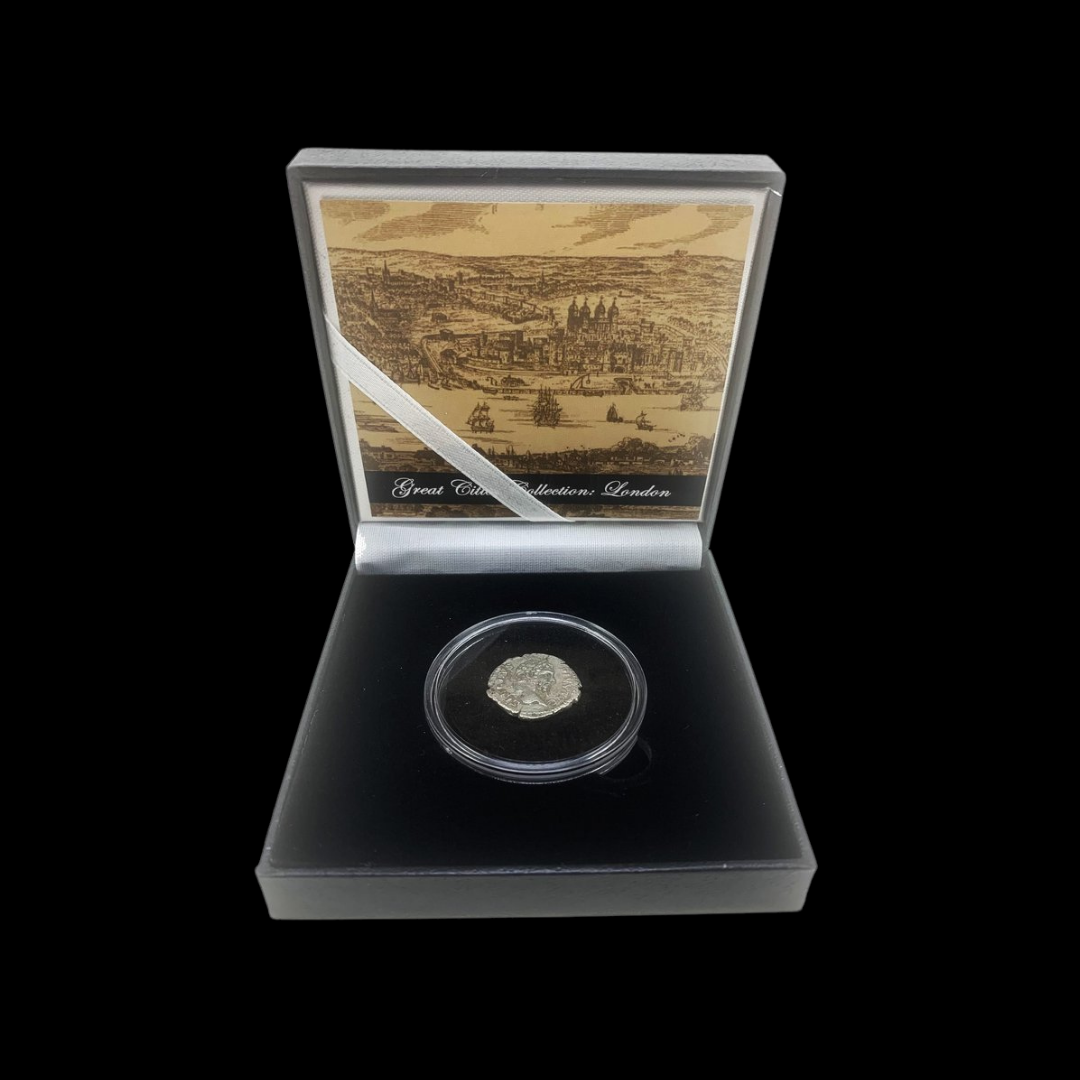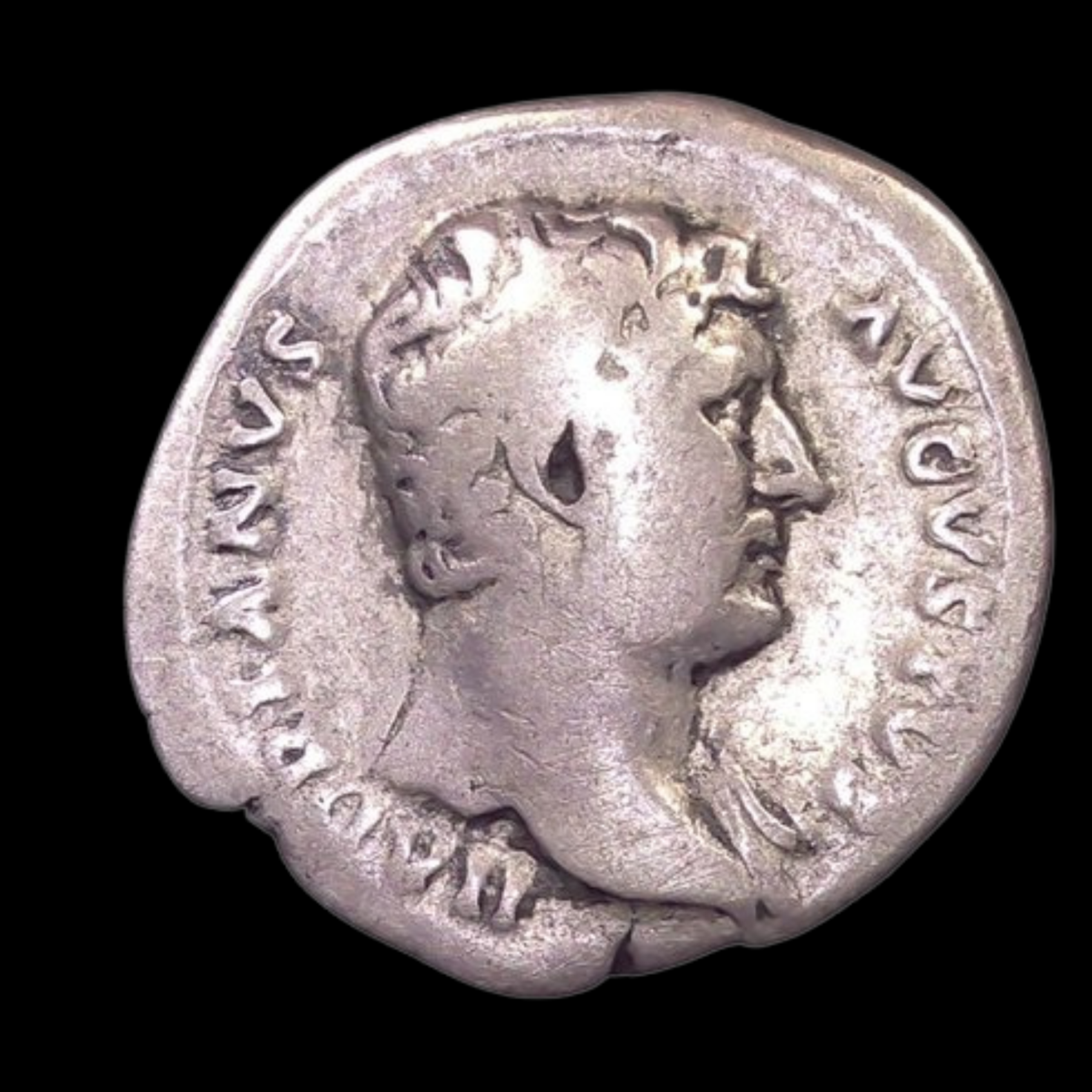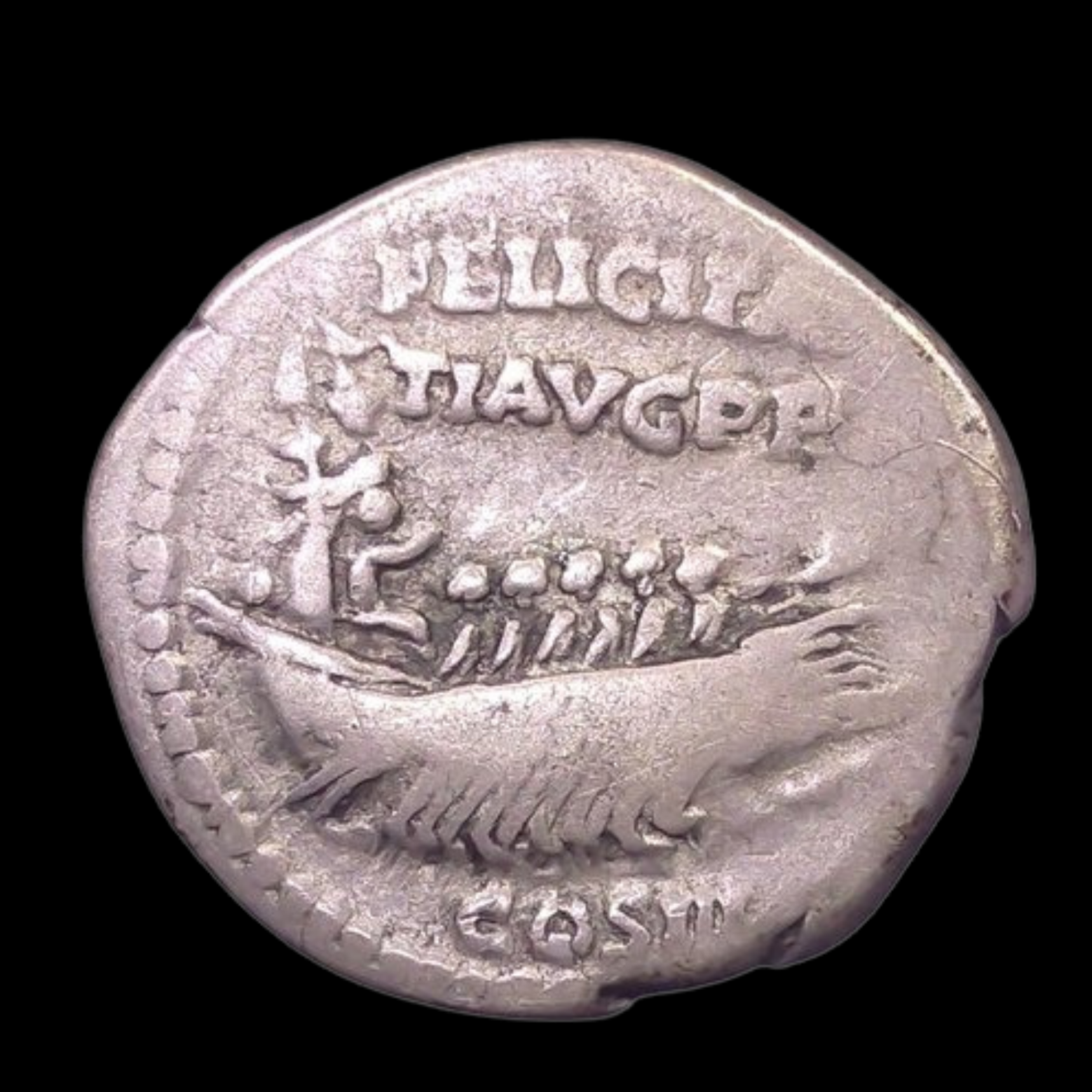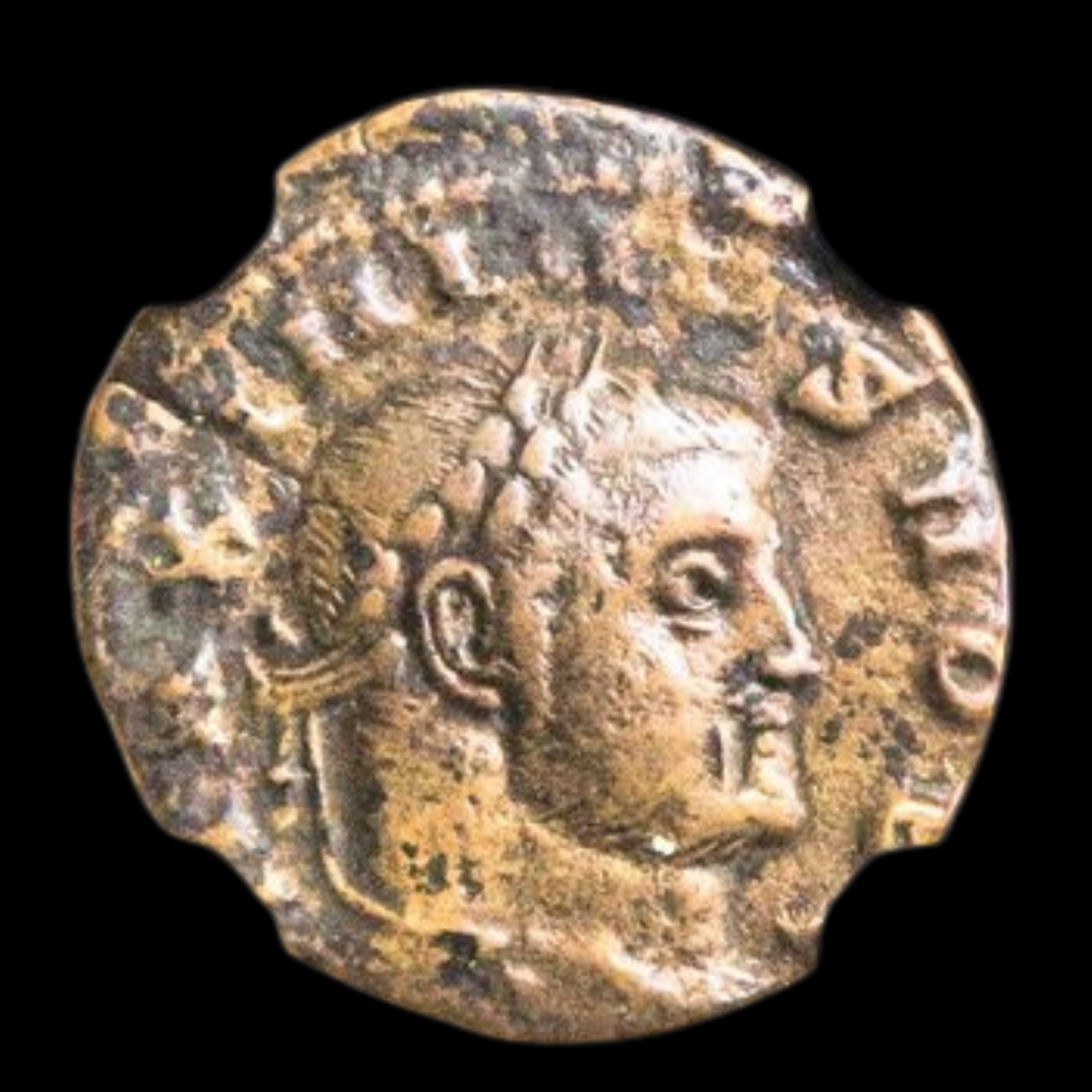 Image 1 of 7
Image 1 of 7

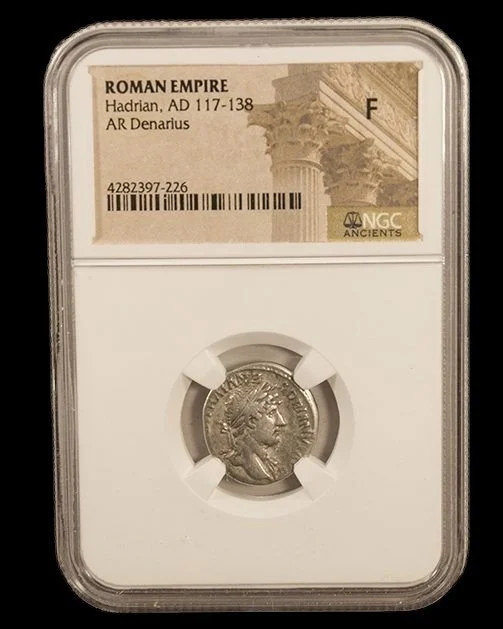 Image 2 of 7
Image 2 of 7

 Image 3 of 7
Image 3 of 7

 Image 4 of 7
Image 4 of 7

 Image 5 of 7
Image 5 of 7

 Image 6 of 7
Image 6 of 7

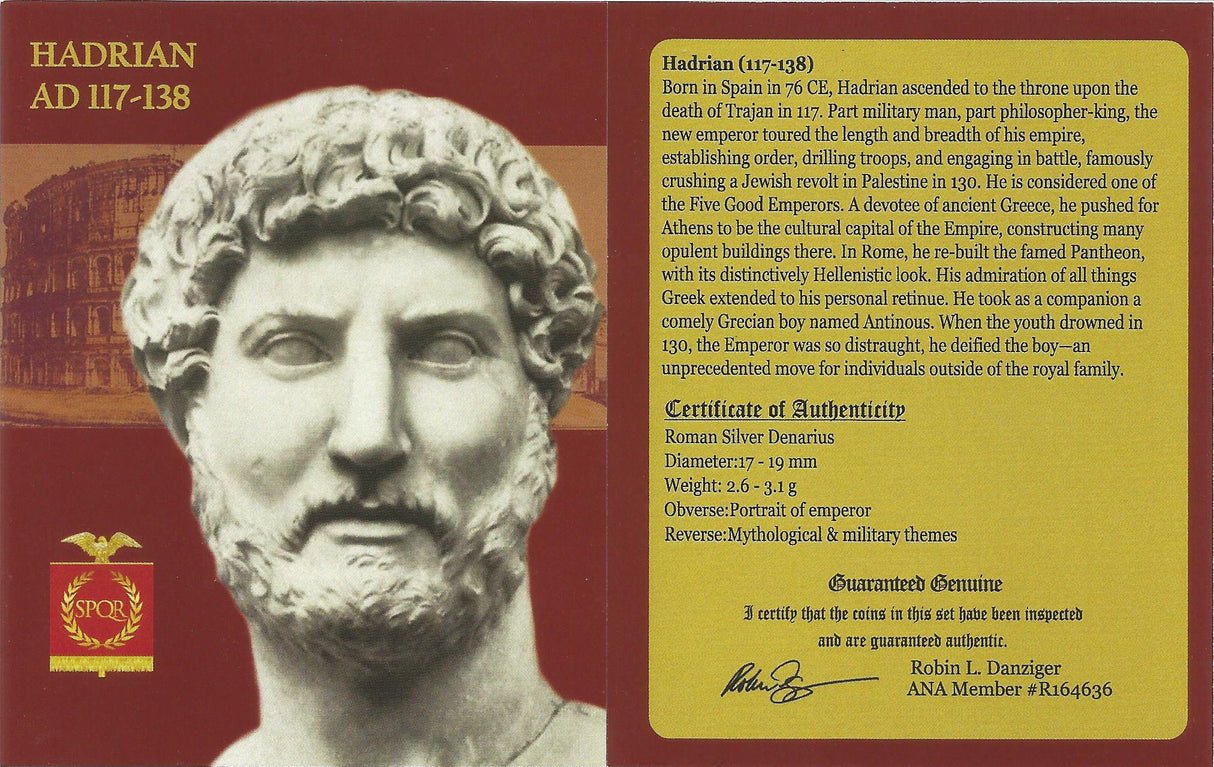 Image 7 of 7
Image 7 of 7








Roman Silver Coin of Emperor Hadrian (about 1,885-1,905 years ago)
The coins shown are representative examples of the grade and type, but not the actual specimens for sale. For details on NGC’s grading standards and definitions, please refer to our NGC Grading page.
This silver denarius portrays Hadrian, the cosmopolitan emperor whose reign represented a decisive shift from conquest to consolidation within the Roman Empire. Known for his extensive travels throughout the provinces, intellectual interests, and ambitious building projects, Hadrian combined pragmatic governance with Hellenistic cultural sensibilities, leaving an architectural and administrative legacy that transformed the Roman world.
Coin Description:
Front side: Portrait of Emperor Hadrian facing right, typically shown with his distinctive beard (which set a new imperial fashion) and curly hair, with Latin inscription giving his name and titles
Back side: May feature themes reflecting Hadrian's interests: architecture, provinces he visited, deities associated with peace and prosperity, or personifications of imperial virtues
Technical Details:
Silver composition
Denomination: Denarius
NGC certified
Minted between 117-138 AD
Condition as certified by NGC
Historical Significance:
Born in Spain like his predecessor Trajan, Hadrian implemented a dramatic shift in Roman policy, abandoning Trajan's expansionism in favor of strengthening existing borders. This defensive strategy manifested most famously in Hadrian's Wall across northern Britain, which remains a major archaeological attraction today. His extensive travels through nearly every province—spending more than half his reign outside Rome—were unprecedented for an emperor and reflected his hands-on approach to governance. An admirer of Greek culture, Hadrian rebuilt the Pantheon in Rome with its distinctive dome and completed the massive Temple of Olympian Zeus in Athens. He founded cities, improved infrastructure, and reformed the civil service, creating a more systematized imperial administration. Despite these accomplishments, his brutal suppression of the Bar Kokhba revolt in Judea and controversial relationship with the youth Antinous have complicated his historical legacy.
The coins shown are representative examples of the grade and type, but not the actual specimens for sale. For details on NGC’s grading standards and definitions, please refer to our NGC Grading page.
This silver denarius portrays Hadrian, the cosmopolitan emperor whose reign represented a decisive shift from conquest to consolidation within the Roman Empire. Known for his extensive travels throughout the provinces, intellectual interests, and ambitious building projects, Hadrian combined pragmatic governance with Hellenistic cultural sensibilities, leaving an architectural and administrative legacy that transformed the Roman world.
Coin Description:
Front side: Portrait of Emperor Hadrian facing right, typically shown with his distinctive beard (which set a new imperial fashion) and curly hair, with Latin inscription giving his name and titles
Back side: May feature themes reflecting Hadrian's interests: architecture, provinces he visited, deities associated with peace and prosperity, or personifications of imperial virtues
Technical Details:
Silver composition
Denomination: Denarius
NGC certified
Minted between 117-138 AD
Condition as certified by NGC
Historical Significance:
Born in Spain like his predecessor Trajan, Hadrian implemented a dramatic shift in Roman policy, abandoning Trajan's expansionism in favor of strengthening existing borders. This defensive strategy manifested most famously in Hadrian's Wall across northern Britain, which remains a major archaeological attraction today. His extensive travels through nearly every province—spending more than half his reign outside Rome—were unprecedented for an emperor and reflected his hands-on approach to governance. An admirer of Greek culture, Hadrian rebuilt the Pantheon in Rome with its distinctive dome and completed the massive Temple of Olympian Zeus in Athens. He founded cities, improved infrastructure, and reformed the civil service, creating a more systematized imperial administration. Despite these accomplishments, his brutal suppression of the Bar Kokhba revolt in Judea and controversial relationship with the youth Antinous have complicated his historical legacy.


